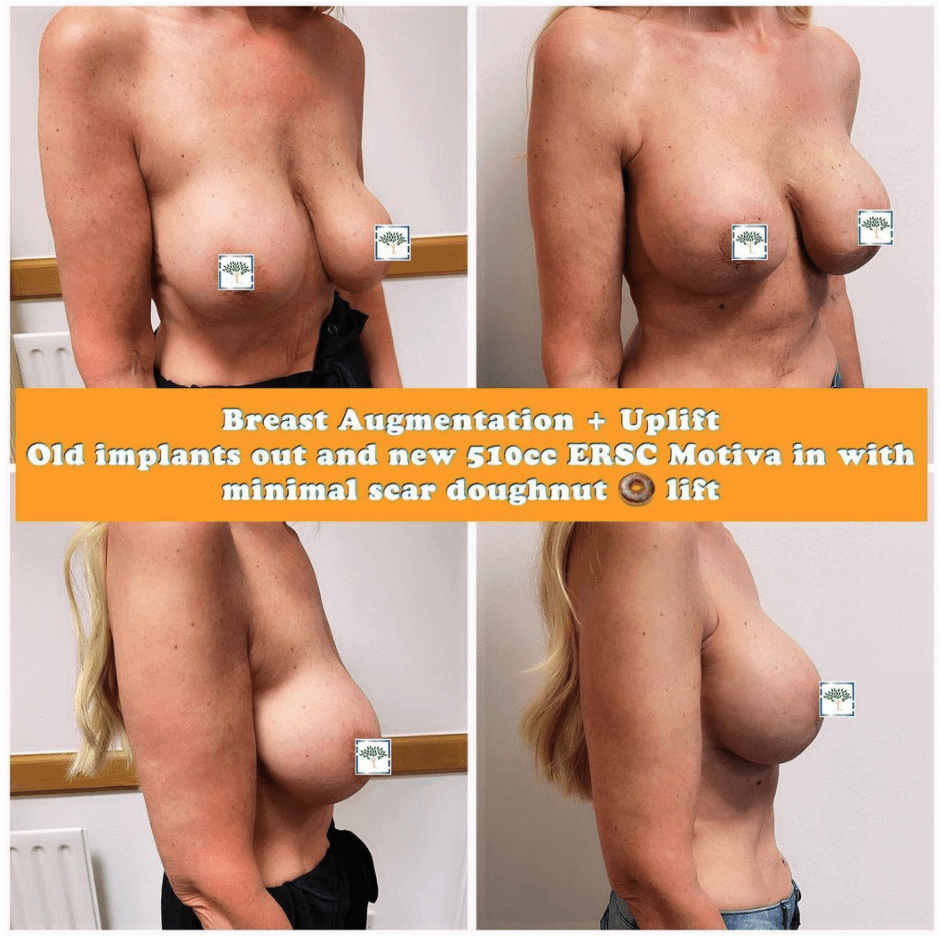How your scar heals and looks after surgery is important to anyone considering plastic surgery. Although your surgeon takes every step to conceal scars in the body’s natural creases and make them as hidden as possible, scarring is inevitable in some cases. After surgery, your doctor may recommend silicone strips to help your scars heal faster.
What Causes Scarring After Plastic Surgery?
Scars usually form in response to an epidermis injury or injury to the dermis, the bottom layer of the skin. When only the top layer of the skin is injured, the resulting scar is minimal. On the other hand, damage to the dermis layer results in a more noticeable scar. Most cosmetic procedures involve an incision into the dermis, which is why most procedures result in scarring.
When the dermis is injured during a procedure, the body tries to heal the wound by producing collagen. Collagen is a protein produced by the body that gives the skin its elasticity. The collagen cells the body produces in the event of an injury wound together create a scar by shrinking the wound edges so it can close. How long the scar takes to fade depends on the extent of the procedure. Generally, even with healthy skin and the wound healing well, the scar can take up to 18 months to fade. Fresh scars are red, then turn pink, and then white. In the later stages, the scar thins and is no longer as noticeable.
Cosmetic Surgery Scars: What are Silicone Strips?
Let’s start by talking about scars. Procedures such as a full tummy tuck and lower body lift require extensive incisions, resulting in scarring. Practically every surgery will result in a scar. Scars start off looking red, raised, and sometimes quite angry looking. Although everyone heals differently, the majority of scars fade over time. Typically, scars take up to 12 or 18 months to heal. So, what can you do to help speed up healing? That’s where silicone tape comes in.
Silicone tape or silicone strips are made from medical grade silicone. It’s a self-adhesive type of plaster with silicone that’s used to promote the healing of scars and hypertrophic scars. A hypertrophic scar is an abnormal response to the healing process that results in a thickened, wide scar around the wound site. Silicone tape is an internationally recognised way to treat and improve scars. It’s used amongst healthcare professionals as a form of scar management. You can also get silicone gel and sheets, depending on your needs.

Silicone Tape for Scars: How Does it Work?
Silicone helps with scars by creating a good balance of skin hydration and collagen regulation. Scars need the right combination of oxygen and moisture to heal properly. When the silicone is applied, the moisture of the wound site is maintained, and the skin’s collagen production is regulated. This process helps to flatten the scar tissue, decrease discolouration, and allow the scar to blend in with the surrounding skin. The silicone also helps protect the scar from bacteria.
Keeping the surgical site hydrated is crucial for producing good scars. But silicone strips offer several benefits to the healing process. The strips ease the tension around the wound. So, instead of the edge of the surgical site having all the tension, it’s transferred to the outer parts of the silicone sheet. This helps to provide a good environment for scar healing.
Silicone strips have also been found to reduce the blood flow to the surgical site, which can be beneficial for scar formation. Finally, silicone tape can help in preventing the formation of raised scars.
Silicone tape can help to heal scars, but other factors also affect the appearance of your scars like:
- Type of surgery
- Width, length, and location of your incision
- Your natural healing abilities
Scar Reduction: When Can You Use Silicone Strips?
Silicone strips can be a good choice for scar management to help reduce large post-surgery scarring. It can be especially useful for breast lift scarring and other breast surgeries like breast enhancement and breast reconstruction.

You can get silicone strips in lots of different shapes and sizes. For breast augmentation, you can find specific strips to suit your scarring. You can cut silicone strips to size to fit a particular body part for other areas.
Generally, most surgeons recommend that you start using silicone tape about 3 weeks after everything is healed. In reality, your plastic surgeon would monitor your wound healing and tell you when you can start using silicone tape. This is because one person may heal slower or faster than someone else. So, it’s difficult to give a blanket statement.
Applying silicone tape will form part of your plastic surgery recovery toolkit. Where necessary, your plastic surgeon will give you instructions to follow so you know how to apply and change the tape.
The Benefits of Using Silicone Strips for Scars
There’s a reason why doctors often recommend using silicone strips for scars, including:
- Non-invasive and painless
- Easily available in different sizes
- Blends in with natural skin colour
On the other hand, the main disadvantages of using silicone strips are:
- Need to wear it 12-24 hours a day
- Potential for a skin reaction
- Need to wait a few months to see the results
Tips for Reducing Cosmetic Surgery Scars
When talking about scar reduction and optimising healing after cosmetic surgery, there are several factors that come into play. While silicone strips are beneficial, it’s important that you follow your surgeon’s post-operative instructions. Dr Riaz Agha at the Harley Clinic talks about how to optimise and reduce scars after an operation in the video below.
Scar healing can vary massively, so it’s crucial that you stop smoking, follow a healthy diet, and drink plenty of water during your recovery to promote healing. With any incision, there will be a scar; it’s unavoidable. But that doesn’t mean it needs to be obvious and angry. With the right steps, a great plastic surgeon, and proper aftercare, any scarring should heal nicely. Apart from using silicone gel, follow these tips to support the healthy formation of your cosmetic surgery scars.
Properly Care for the Wound
Any cosmetic surgery will require your doctor making an incision; it’s unavoidable. When you go home, your doctor will give you a few post-surgical instructions, like how to care for your wound properly. As you recover, ensure you change the dressing as instructed by your doctor. At the same time, avoid pulling at the skin around the incisions by keeping your activity to a minimum. The more strain you put on the incision site, the higher the risk of ending up with enlarged scars that are more noticeable. It’s vital that you keep the wound clean and minimise any infection risk that would cause the wound or the scar to worsen.
Avoid UV Light
Exposure to UV light can worsen the appearance of fresh scars. A good rule of thumb is to stay out of the sun and off any tanning beds for at least 18-24 months. This doesn’t mean you can’t go outside. Be sure to wear sun protection and cover up fresh scars with clothing. While it’s tempting to show off your new body or nose, keep in mind the effect that UV light can have on scars.
Avoid Pulling and Tension
Avoid or at least reduce stress on the incision site. So, try to avoid doing anything that puts tension on the area. This could include bending, lifting, or even driving. If you put too much pressure on the site, it could pull the incision apart, so you would end up with a bigger scar than necessary.
Apply Topical Creams
Certain creams may help to reduce the appearance of a scar after cosmetic surgery. Initially, your doctor may prescribe a cream after your procedure to reduce the risk of infections that could strain the incision site. You can buy most topical scar treatments over the counter, which your doctor will be able to recommend.
Wear a Compression Garment
Not all plastic surgery procedures involve wearing a compression garment. However, if you have a procedure that requires you to wear special clothing, make sure you do. Procedures like breast surgery involve wearing a compression garment and a support bra. These aid in healing by minimising the movement of your breasts, which can strain the incision site resulting in more scarring.
Chemical Peels
Chemical peels help reduce the uneven texture of a scar. Chemical peels are made of acids like glycolic acid, which removes any uneven skin when it is peeled off. You would need to be fully healed before considering a chemical peel.
Scar reduction surgery
Most patients don’t mind the minimal scarring caused by cosmetic procedures. However, some people are often self-conscious about the appearance of their scars. Once the wound has healed, and the scar has formed, you can try scar reduction surgery to minimise its look. Also referred to as scar revision surgery, the procedure is done in one of many ways. A surgeon may also cut the scar from the body and replace it with a skin graft from another area of the body. Most surgeons take great measures to ensure that you end up with minimal scarring that will never require surgical correction.
Book a consultation today at the Harley Clinic, London, to learn how to start your cosmetic surgery journey.
If you’re interested in learning about the latest cosmetic surgery news, read our ultimate guide on Plastic Surgery Statistics.













